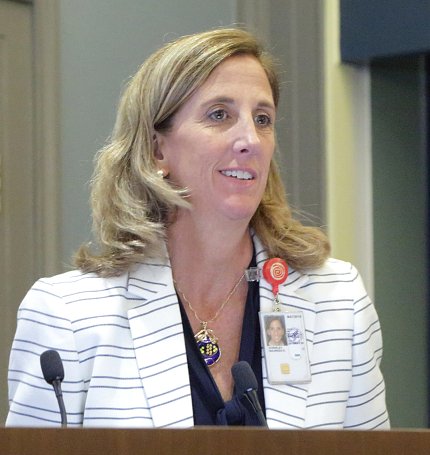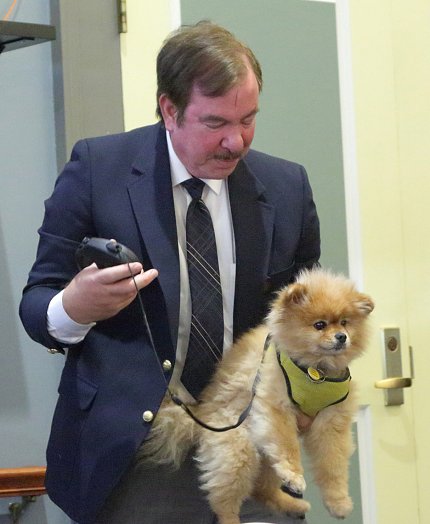NIH Observes Disability Employment Awareness Month

Photo: Bill Branson
Focus on what people with disabilities can do, rather than their limitations. That was the takeaway message at the 2016 National Disability Employment Awareness Month kickoff in Bldg. 1’s Wilson Hall on Oct. 5.
Dr. Maureen Gormley, NINDS deputy director for management, gave the keynote address. She spoke about her experience hiring employees with intellectual disabilities (IDs) at the Clinical Center, where she served as chief operating officer in recent years. The event also featured brief presentations from NIH employees with disabilities.
“People with disabilities have a 30 percent lower national employment rate,” Gormley said. It’s especially problematic for those who are 18 to 21 years old with ID as they transition from school to the workforce.
Several years ago, Gormley, then at the CC, received an email from Ivymount School, a Rockville education center for children with learning and intellectual disabilities, speech and language disorders and autism spectrum disorders.
The email asked if the CC would be interested in hosting interns through Project SEARCH, “a school-to-work transition program that helps kids with ID.” The program is supported by Ivymount and SEEC, a Silver Spring nonprofit that provides community-based employment support to transitioning youth and adults. The project was first developed at Cincinnati Children’s Hospital Medical Center in 1996. Gormley said the project is now active in more than 300 sites across the United States and Canada, England, Scotland, Ireland and Australia.
After a presentation by Ivymount staff, Gormley and one of her colleagues, Denise Ford, agreed to partner with Project SEARCH. They found CC departments that needed help and matched interns with jobs based on their skill and ability. She noted that the jobs are complex and require the ability to focus.
“It took some convincing on our part,” she said. “However, once people agreed, they seemed to have this match made in heaven. We were seeing it over and over again.”

Photo: Bill Branson
At the time, Gormley was obtaining her doctoral degree. She wrote her dissertation about workplace stigma toward employees with disability because of her experiences with the project. She interviewed individuals from 14 organizations around the country that implemented Project SEARCH and asked co-workers about their perceptions before, during and after the organizations hired interns.
Before the internships began, Gormley found many employers skeptical of their ability to mentor someone with an intellectual disability. Employers also had concerns about how long it would take to teach participants and their ability to communicate effectively.
“People don’t necessarily presume that people with ID are going to be successful in the workplace,” she noted. “And that leads to negative co-worker perceptions before they even meet the individuals.”
Over time, however, perceptions changed. At the end of the internships, employers had favorable opinions of the interns. Many of their concerns were unfounded; 93 percent of comments were positive. Gormley noted, “It wasn’t just the kids who got trained. It was us [the employers] who changed.” They came to see the interns “as valuable employees with remarkable abilities.”
At NIH, the interns spend 1 hour per day in a classroom. Afterwards, they work for 5 hours at their job sites. The internship consists of 3 10-week rotations. At the CC, for example, interns might help out with data entry, supply management, patient bar coding or hand hygiene.
Since Project SEARCH first began at the CC in 2010, it has expanded to 17 institutes and centers; 64 students have completed internships. Of those, 42 have gone on to become full-time employees. Only four employees have left. Gormley called the project “one of the most rewarding things I have ever worked on at NIH.”
After her address, CIT’s Phil Cummings, NIDCD’s Dr. Rita Das, NHLBI’s John Gillon and NHGRI’s Dr. Maximilian Muenke spoke about how they contribute to NIH’s mission despite their disabilities.
NIDCD’s David Rice gave closing remarks. “Being a deaf person is who I am,” he said. “But I am an employee here and what defines me is my work, striving to make this place better for the future. Don’t pity someone for what they can’t do. Instead recognize someone for what they can do.”
